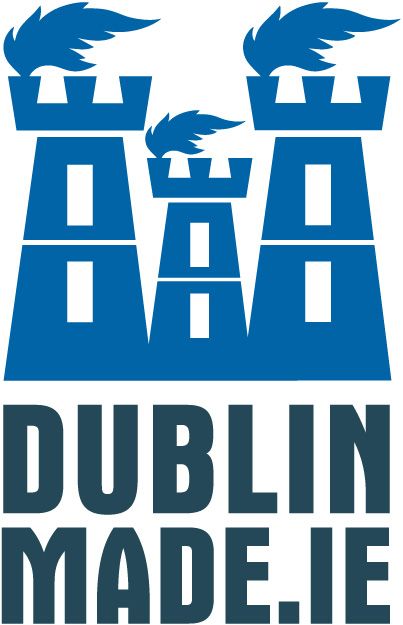
Henry Segrave grew up in Dublin – set Land and Water Speed Records in 1929 and 1930 | Season 4 – Episode 4
Floats, Wheels Jan 30, 2024
Acclaimed racing driver Henry O’Neal de Hane Segrave (1896 – 1930), a three-time Land Speed Record holder and native of the United States, spent his childhood in Ireland. He was raised at Cabragh House, a now-demolished house located at the intersection of Faussaugh and Rathoath roads in Cabra, Dublin 7.
During his childhood, he often visited ‘Belle Isle’ house near Portumna, spending his summers there. He was known to regularly participate in the North Shannon Yacht Club regatta held on Lough Boderg, situated on the borders of Leitrim and Roscommon.
After being wounded fighting with the infantry in World War One, Henry Segrave joined the Royal Flying Corps 29 Squadron flying the Airco DH.2 fighter. Interestingly in 1917 Henry Segrave has an unusual claim to fame regarding the first flying drones. Injured in a plane crash following a forced landing from engine failure, he was then appointed as the inaugural ground-based “pilot” for the first unmanned powered aircraft, the “Aerial Target”, which made history as the first controlled drone flight in March 1917.
By the early 1920s Segrave had developed a passion for fast cars. Despite organised car racing being in its early stages, he quickly became an enthusiast and achieved his first victory in only his second race at Brooklands in 1920.
In 1921, Segrave claimed victory in Britain’s inaugural long-distance car race, covering 200 miles at Brooklands in Surrey. Firmly bitten by fast driving Segrave set his first land speed record on March 16th 1926 reaching 152.33 miles per hour (245.15 km/h) with Ladybird, a 4-liter Sunbeam Tiger, at Ainsdale beach in Southport, England.
A year later on March 29th 1927, driving Mystery (a.k.a. ‘the Slug’), a 1000 hp Sunbeam, on the Daytona Beach Road Course, he recorded a speed of 203.79 miles per hour (327.97 km/h) and became the first person to travel over 200 miles per hour (320 km/h).
However, at the peak of his career, Segrave stunned the motor racing world by announcing in April 1927 that he would be leaving car racing to pursue motor-boat racing.
He went on to achieve a series of motor boating victories, securing the German and European Championship titles from 1927 to 1929.
Amidst his busy power-boating schedule, Segrave managed to break his third Land Speed Record on March 11th 1929, at Daytona Beach, USA. Driving The Golden Arrow, designed by Captain Jack Irving specifically for him, the car propelled Segrave to a new record of 233.12 miles per hour (375.17 km/h).
Following the record-breaking 233.12 mph achievement, The Golden Arrow, never drove again, recording a mere 18.74 miles (30.16 km) on its clock.
With the Land Speed Record secured, the newly knighted Sir Henry Segrave shifted his focus to adding the Water Speed Record to his achievements. A new power boat was constructed at a cost of £25,000, Miss England II was propelled by two 1,800hp twelve-cylinder Rolls-Royce R-Series aero engines.
Aiming for a speed of 110mph, the record attempt at Lake Windermere was scheduled for June 1930.
On June 10th, Henry Segrave , along with mechanics Michael Wilcocks and Vic Halliwell, commenced high-speed runs. The initial test went smoothly, reaching 107 mph before the propeller broke.
Miss England II completed eleven runs under Segrave’s control, with mixed success. Its Achilles heel was its single 12,000rpm steel and bronze prop, hampered by metallurgical limitations of the era. Segrave, good-humoured as ever, announced “I will either break the record or my propellers tomorrow”.
On Friday June 13th 1930 on the final run down the lake, the boat swerved to starboard, the bow rose in the air and Miss England II was flipped over.
Henry Segrave was brought to a nearby house with severe injuries. He passed away shortly afterward, with his wife Doris at his side, who was able to convey the news that the record had been broken, with a speed later confirmed as 98.76 mph (159.93 km/h). Vic Halliwell’s body was recovered later.
Michael Willcocks was the sole survivor of the tragedy. Remarkably, a year later, he returned as mechanic to the rebuilt Miss England II with Kaye Don steering, achieving two additional world water speed records and an unofficial run down Lough Neagh, Northern Ireland at 107 mph.
The Segrave Trophy was later established to honour the life of Henry Segrave and awarded for “Outstanding Skill, Courage and Initiative on Land, Water and in the Air”. The Segrave Trophy has been awarded in most years since 1930; however, it is not presented if the committee deems there was no achievement deserving of the award.
The inaugural recipient of the Segrave Trophy was Australian-born Charles Kingsford Smith who flew from Portmarnock Beach, Ireland to Newfoundland, across the Atlantic, in just over 31 hours and whom we have previously featured https://www.youtube.com/watch?v=Mb6WrRL4UFw&t=30s
Subsequent Segrave Trophy recipients include Malcom Campbell (1932), Stirling Moss (1957) and Lewis Hamilton (2007).
Information sources and photo credits:
International Space Hall of Fame – Archibald Lowe
Motor Sport Images
National Inventory of Architectural Heritage
Pathé News
Paul Hannaford (Former Chairman) – Speed Record Club
Scarf & Goggles
The Boys’ Life of Sir Henry Segrave (1930) – Maclom Campbell & J. Wentworth Day
The Lure of Speed 1928 – Hutchinson
The National Motor Museum Trust (UK)
Tom O’Brien Art
Vintage Dublin in photos and memories
Wikipedia Commons

